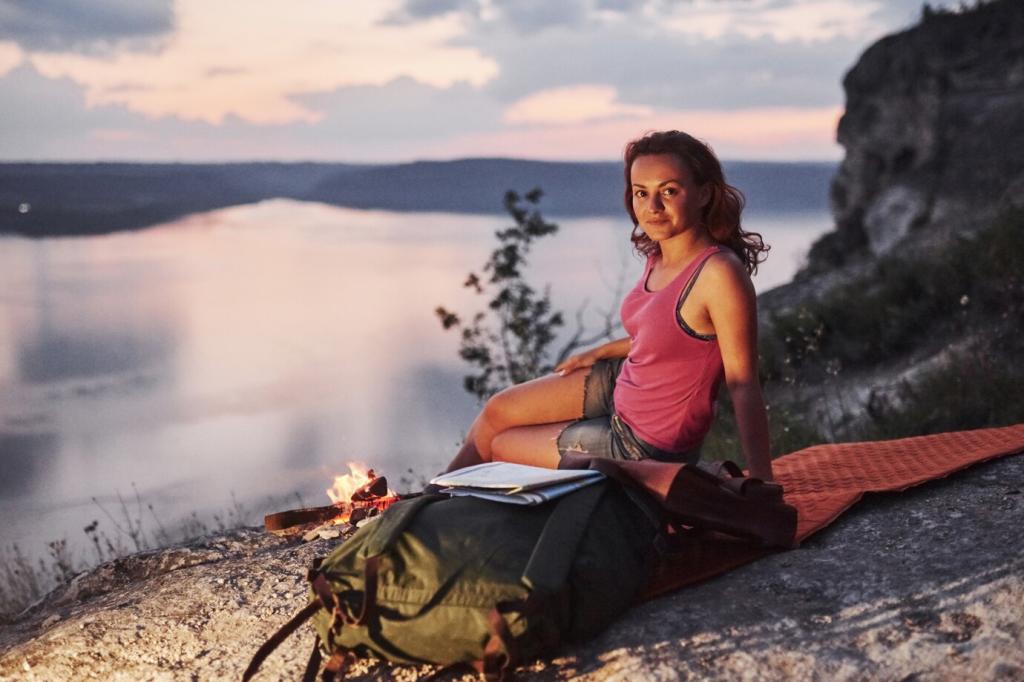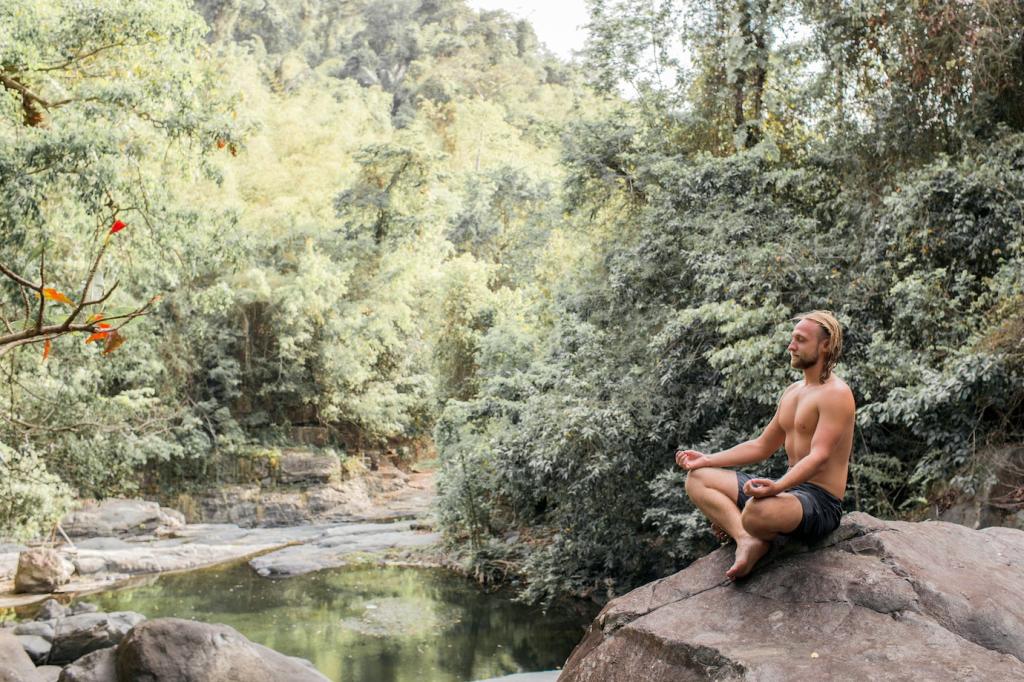Mindful Hiking Safety Tips: Walk Aware, Wander Well
Selected theme: Mindful Hiking Safety Tips. Step onto the trail with presence, kindness, and preparation. Here, we blend awareness practices with proven safety strategies so every mile feels focused, confident, and restorative. Subscribe and share your insights to help our mindful hiking community grow.

Begin with Intention: Preparing Your Mind and Route
Pause for one minute and choose a focus—listening for birdsong, practicing steady breathing, noticing trail textures. Intention sharpens awareness, reduces stressful rushing, and reminds you that safety is a practice, not a checklist. Share your intention, then step onto the trail with clarity.
Begin with Intention: Preparing Your Mind and Route
Study distance, elevation, weather windows, water sources, and exit options. Read recent reports, then visualize decision points where you might turn back. This mental rehearsal supports clear choices when conditions shift. Drop a comment with your favorite map sources and why you trust them.
Begin with Intention: Preparing Your Mind and Route
Tell a reliable contact your itinerary and return time. Pack the Ten Essentials with intention: navigation, headlamp, sun protection, first aid, knife, fire, shelter, extra food, water, and layers. Ask yourself which item protects your calm. Invite others to share their mindful packing tip.
On-Trail Presence: Pace, Breath, and Situational Awareness
The 10-Second Scan Every Quarter Mile
Every fifteen minutes or quarter mile, stop and scan: sky, ground, trail markers, companions, hydration, hunger, and mood. This short ritual catches fraying shoelaces, building fatigue, or shifting clouds before they become problems. Comment if this habit helped you avoid a misstep.
Breathwork to Balance Effort and Alertness
Sync steps with breath—inhale for three, exhale for three on flats; adjust on climbs. Slow exhales calm nerves, sharpen senses, and maintain steady decision-making. Notice how your peripheral awareness expands. Share your favorite breathing pattern so others can test it next weekend.
Trail Etiquette as a Safety Tool
Yield predictably, announce passes kindly, and keep volume low to detect wildlife and other hikers. Courtesy reduces conflict and surprises, which keeps your nervous system comfortable and judgment clear. What’s your go-to phrase when passing? Post it to model mindful communication on busy trails.



Cloud Stories and the Lightning 30–30 Rule
Towering cumulus clouds with dark bases can signal building storms. If thunder follows lightning within 30 seconds, seek shelter; wait 30 minutes after the last thunder before resuming. This simple practice prevents risky exposure and keeps groups grounded in confident, calm decision-making.
Trail Texture and Trip Hazards
Notice transitions from duff to slick rock, roots after rain, and gravel on steep descents. Shorten steps, widen stance, and keep eyes ten feet ahead. A mindful footfall is quieter, safer, and kinder to joints. Comment with your favorite cue for stable, efficient downhill movement.
Respectful Wildlife Distance and Detours
Maintain at least 100 yards from bears and 25 yards from most other wildlife. Pause, give space, and reroute calmly if needed. Your stillness keeps animals safe and your group composed. Share a wildlife encounter lesson that deepened your respect for the trail community.
Stories from the Switchbacks: Lessons that Stick
A Missed Turn, a Calm Reset
I once followed boot prints past a faint junction. A 10-second scan caught the error: the sun angle felt wrong. A quick map check, deep breath, and we backtracked safely. Fewer assumptions, more awareness—post your own tiny save that prevented a bigger mess.
Micro-Breaks Prevent Macro Problems
A friend used to push nonstop, then bonk hard. We tried two-minute mindful breaks every forty-five minutes—water, snack, stretch, scan. No bonk, better mood, steadier steps. Try it next hike and report back with your optimal interval for energy and attention.
The Headlamp That Changed Everything
We lingered at sunset, then shadows swallowed the trail. One tiny headlamp turned panic into playfulness. Now it lives in the pack, always. That small choice reshaped our risk profile. What single piece of gear most improved your confidence and calm after dark?
STOP: Stop, Think, Observe, Plan
When disoriented, freeze. Breathe. Think about last known point. Observe landmarks, tracks, weather, and available daylight. Plan a conservative next step or shelter-in-place. This mindful pause reduces cascading mistakes and restores clarity. Save this acronym and teach it to your hiking partners.
Signal, Shelter, Sustain
Carry a whistle, bright bandana, and reflective blanket. Three whistle blasts signal distress. Create insulation from wind and ground. Sip water, eat small snacks, and minimize sweat. Mindful survival is steady, patient, and deliberate. Comment with your lightweight signaling tip for cloudy conditions.
After-Action Reflection for Future Safety
Back home, journal what worked, what felt tense, and what you will change. Reflection turns chance into skill. Share a short debrief with your hiking group or post highlights here, so our community keeps learning and strengthening mindful safety muscles together.
